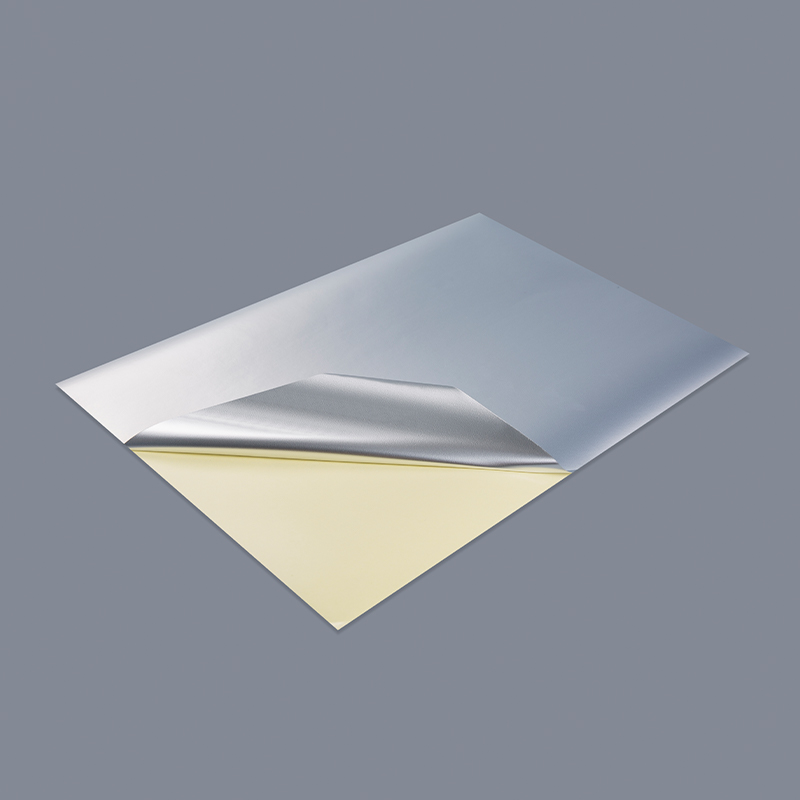The production of adhesive aluminum foil paper involves several key manufacturing methods, each tailored to meet specific application requirements such as packaging, insulation, or industrial sealing. Here are the common methods used in production:
1. Lamination Process
Lamination is one of the most widely used methods for producing adhesive aluminum foil paper. This involves bonding aluminum foil to a paper or film backing with an adhesive layer in between. There are different types of lamination processes:
Wet Lamination:
Uses a water-based or solvent-based adhesive to bond aluminum foil to paper.
The adhesive is applied to one of the surfaces, and the materials are pressed together before being dried in an oven to remove excess moisture or solvents.
Common in food packaging and industrial applications where moisture resistance is needed.
Dry Lamination:
Involves applying a solvent-based adhesive to the foil or paper, then evaporating the solvent before pressing the two materials together under heat and pressure.
This process provides strong adhesion and is commonly used in high-performance applications such as insulation.
Extrusion Lamination:
Uses molten plastic (such as polyethylene or polypropylene) as the bonding agent between the aluminum foil and the paper.
This method provides waterproofing and enhanced durability, making it suitable for barrier packaging, industrial insulation, and construction applications.
2. Coating Process
Another common method involves directly coating the aluminum foil with an adhesive layer, eliminating the need for a secondary bonding material like paper. Some coating techniques include:
Solvent-Based Adhesive Coating:
A solvent-based adhesive is applied to the foil, followed by drying and curing to form a uniform adhesive layer.
Used in applications requiring high heat resistance and strong adhesion to various surfaces.
Water-Based Adhesive Coating:
Uses water-based adhesives to reduce VOC emissions and environmental impact.
Offers eco-friendly and cost-effective production but may have lower adhesion strength compared to solvent-based methods.
Hot Melt Coating:
A thermoplastic adhesive (hot melt glue) is heated and applied directly onto the aluminum foil.
This method provides fast curing and excellent bonding strength but may not be suitable for applications requiring high-temperature resistance.
3. Pressure-Sensitive Adhesive (PSA) Application
This method involves coating the aluminum foil with a pressure-sensitive adhesive (PSA) and then applying a release liner to protect the adhesive until it is ready for use.
Acrylic-Based PSA:
Offers strong adhesion, flexibility, and resistance to UV light and moisture.
Common in industrial sealing tapes and insulation applications.
Rubber-Based PSA:
Provides high tack and quick adhesion, making it ideal for temporary applications such as masking and wrapping.
Silicone-Based PSA:
Used for high-temperature applications where resistance to extreme heat and chemicals is required.

4. Embossing & Surface Treatment
After the adhesive is applied, additional surface treatments may be done to enhance performance:
Embossing:
Creates a textured surface to improve grip, reduce glare, or enhance the aesthetic appeal of the foil.
Common in decorative applications, food packaging, and insulation wraps.
Anti-Corrosion Coating:
Protects the aluminum foil from oxidation and chemical degradation, extending its lifespan.
Often used in HVAC insulation and industrial sealing applications.
Color Coating & Printing:
Some applications require colored or printed aluminum foil, achieved using UV-curable inks, flexographic printing, or anodized coloring techniques.
Used in branding, decorative wrapping, and high-visibility safety labeling.
5. Die-Cutting & Roll Conversion
Once the adhesive aluminum foil paper is manufactured, it is processed into sheets, rolls, or pre-cut shapes based on the intended application.
Roll-to-Roll Conversion:
The foil is wound into large rolls for bulk industrial use, such as HVAC insulation tapes and food wrapping materials.
Die-Cutting:
Used to cut the adhesive aluminum foil into predefined shapes or labels for electronic shielding, industrial masking, and specialized packaging.

 English
English Español
Español русский
русский











